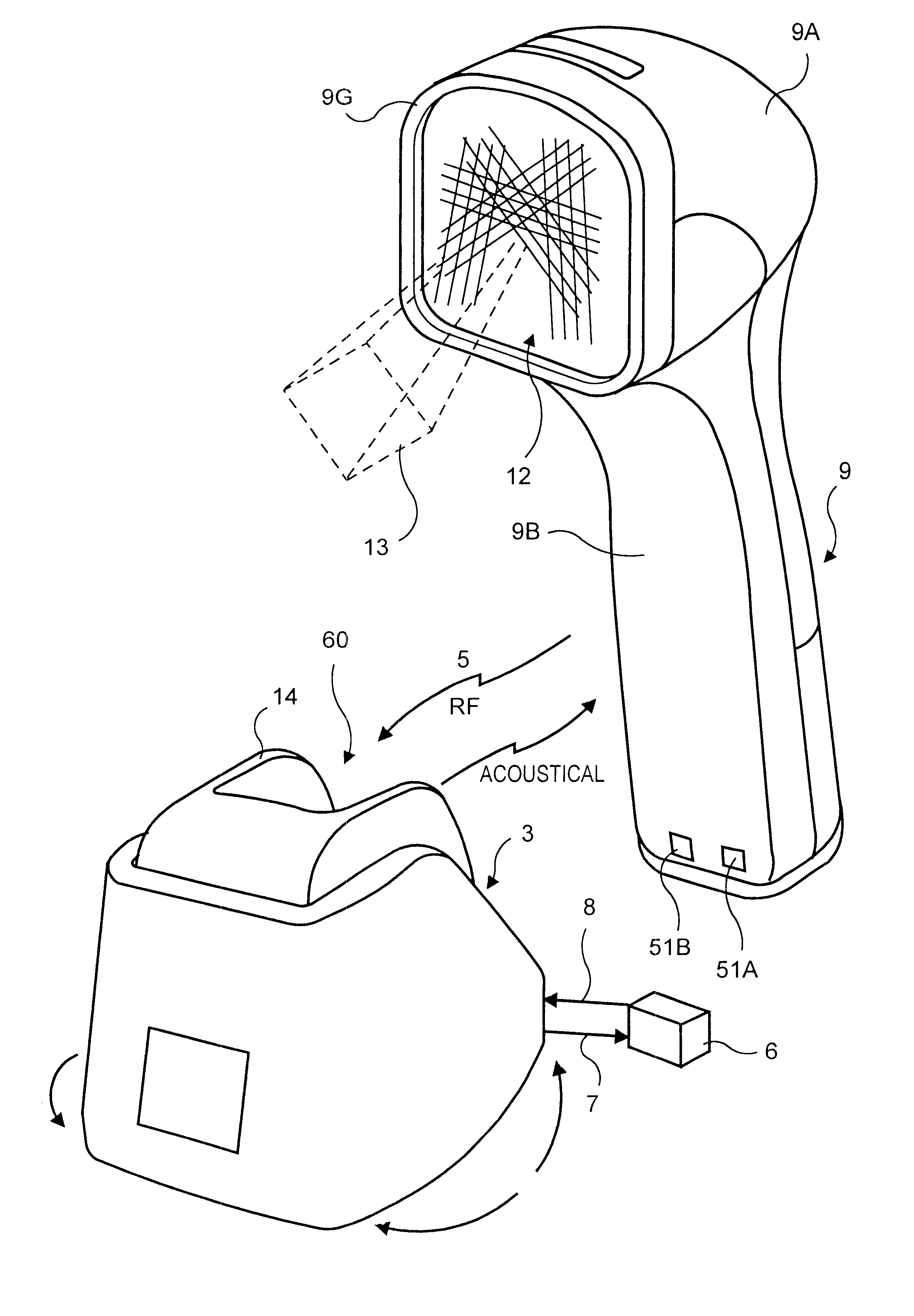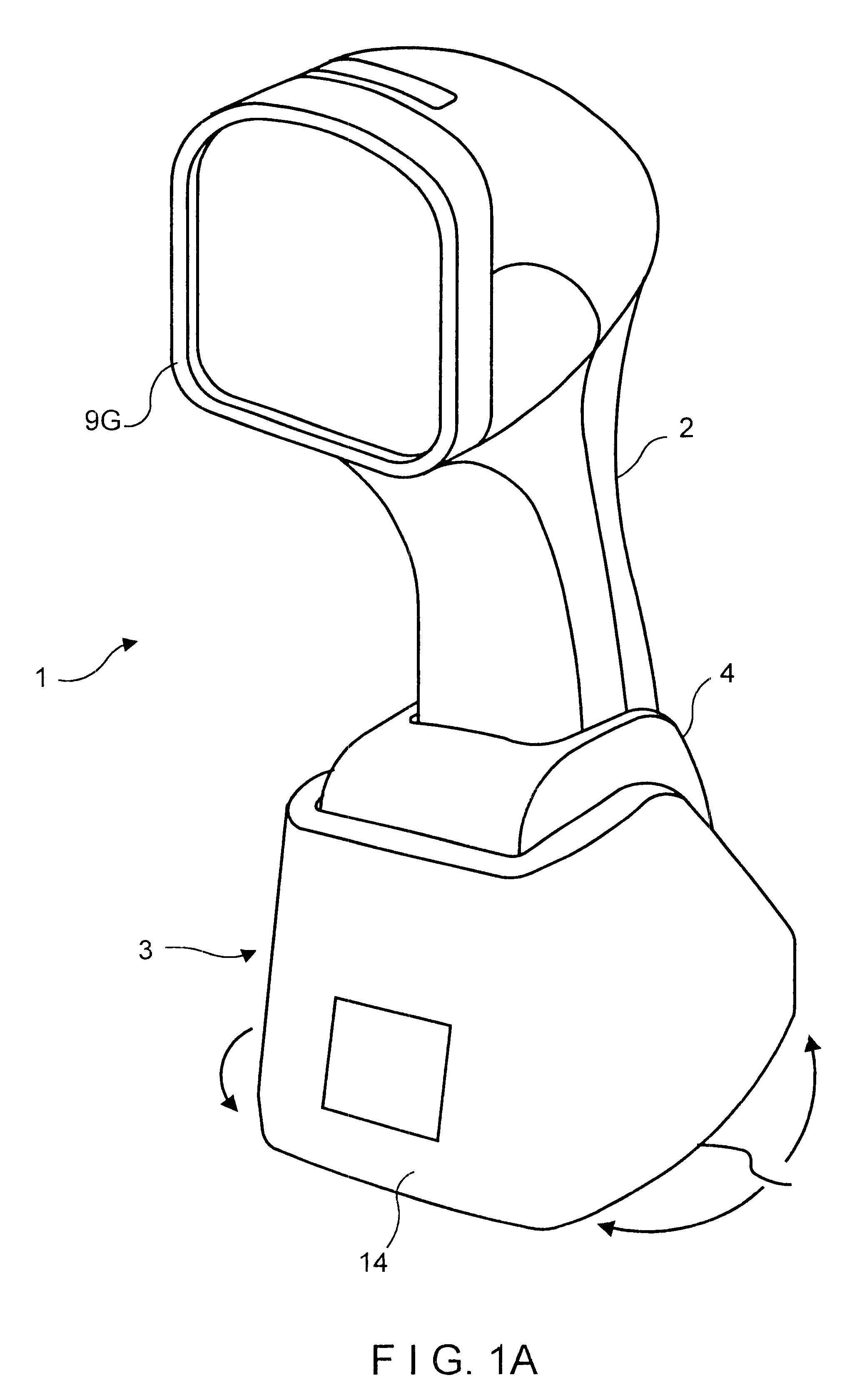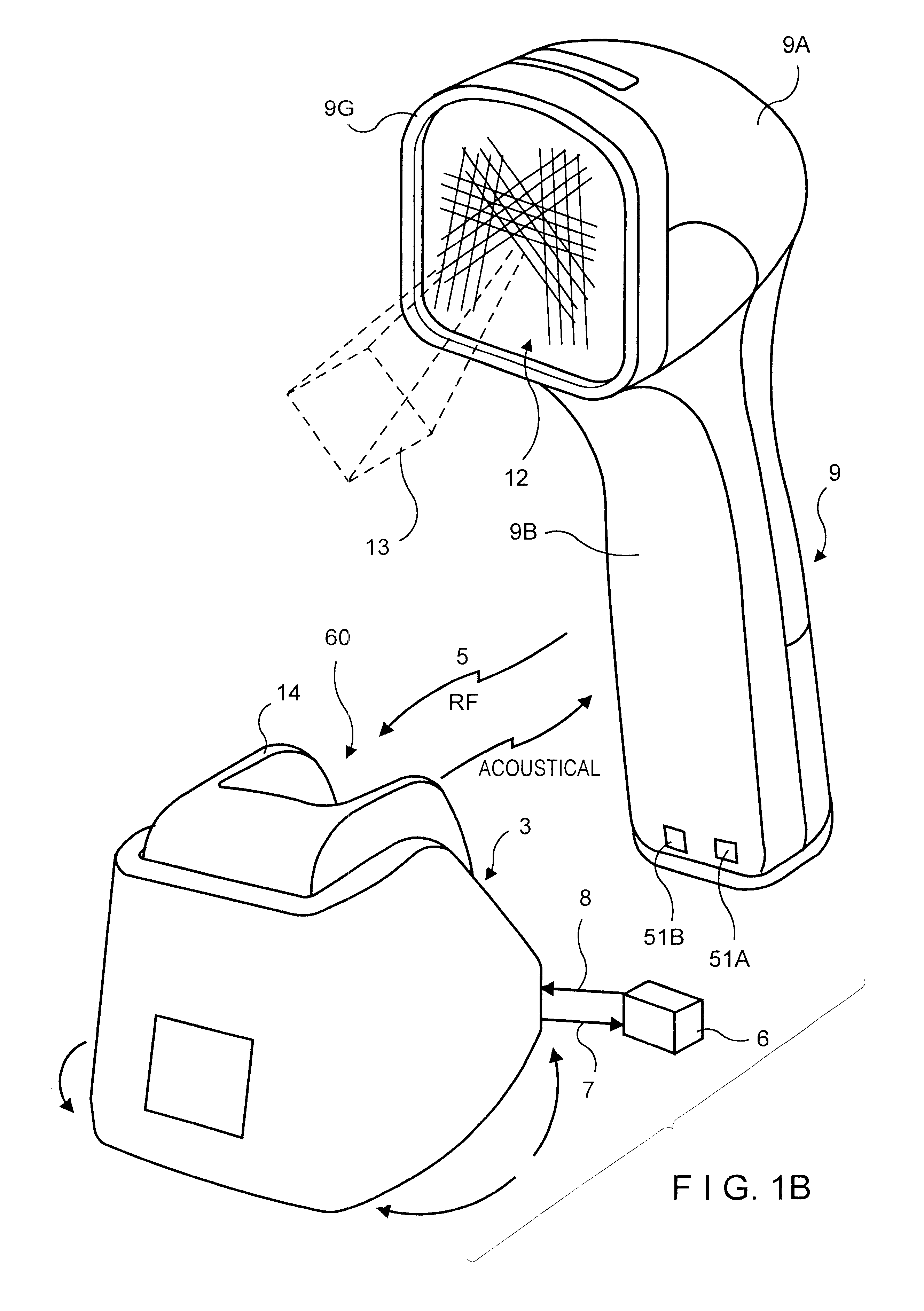Automatic optical projection scanner for omni-directional reading of bar code symbols within a confined scanning volume
a bar code and automatic technology, applied in the field of optical projection scanners, can solve the problems of difficult manipulation of hand-held laser scanners, inconvenient assembly-line applications, and devices with a number of shortcomings and drawbacks, so as to facilitate rapid steady-state response, conserve power consumption, and save power consumption
- Summary
- Abstract
- Description
- Claims
- Application Information
AI Technical Summary
Benefits of technology
Problems solved by technology
Method used
Image
Examples
Embodiment Construction
As shown in FIGS. 1 to 3B, automatic bar code symbol reading system 1 of an illustrative embodiment of the present invention comprises an automatic (i.e., triggerless) portable bar code symbol reading device 2 operably associated with a base unit 3 having a scanner support stand 4 pivotally connected thereto, for releasably supporting the automatic bar code symbol reading device 2 at any one of a number of positions above of a counter surface at a Point of Sale (POS) station. In the preferred embodiment, the bar code symbol reading device 2 is operably connected with its the base unit 3 by way of a one way electromagnetic link 5 that is momentarily created between bar code symbol reading device 2 and its mated base unit 3 after the successful reading of each bar code symbol by the bar code symbol reading device. Operable interconnection between the base unit and a host system (e.g., electronic cash register system, data collection device, etc.) 6 is achieved by a flexible multiwire ...
PUM
 Login to View More
Login to View More Abstract
Description
Claims
Application Information
 Login to View More
Login to View More - R&D
- Intellectual Property
- Life Sciences
- Materials
- Tech Scout
- Unparalleled Data Quality
- Higher Quality Content
- 60% Fewer Hallucinations
Browse by: Latest US Patents, China's latest patents, Technical Efficacy Thesaurus, Application Domain, Technology Topic, Popular Technical Reports.
© 2025 PatSnap. All rights reserved.Legal|Privacy policy|Modern Slavery Act Transparency Statement|Sitemap|About US| Contact US: help@patsnap.com



